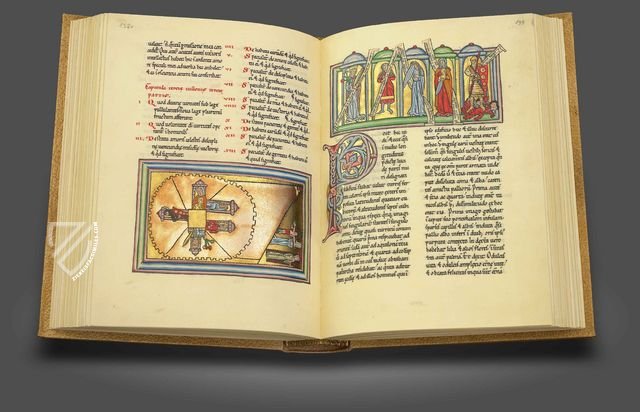
And from her throat to her navel another splendor, red in color, had encircled her, glowing like the dawn (…) and shining mixed with purple and blue. In their center stands the dawn-red-cloaked Virginitas-Virginity herself, hands lifted in the same virginal praise of God as Virgin Mother Church: Īfter this I saw that a splendor white as snow and translucent as crystal had shone around the image of that woman from the top of her head to her throat. Their design was revealed in Scivias II.5, a vision of the Orders of the Church-and as the illustration for this vision in the Rupertsberg manuscript shows, preeminent among those orders were the virgins standing at the breast of Ecclesia, some in verdant green cloaks and others in the sky-blue of the Incarnate Word. Indeed, the very veils and ornate jewelry with which Hildegard (in)famously clothed her nuns on high feast days were divinely-commanded signs of the verdant, virginal grace that worked within and through them. For Hildegard, this divine service was practically sacramental as its sung praises became an open channel to connect her community of nuns to the heavenly choirs and their eternal ministry of praise-in enacting God’s work every day, she and her virgins became agents of divine grace and power. Benedict described the hours of prayer and musical praise that monastics living under his Rule were to offer every single day. The refrain, meanwhile, carries God’s generally creative activity into the particular service that Hildegard and her nuns offered in their daily lives-the “ministries divine” ( divina ministeria) are the opus Dei, the “Work of God,” as St. Yet, this spinning wheel of divine power is not some cold or distant formulation, but one that sparks and glows with the red blush of dawn and the sun’s warming flames, as Hildegard describes its virginal, life-giving activity in the versicle. Here, Hildegard traces virginal viridity back to its source, “rooted in the sun” of divinity and its incomprehensible wheel-the rota is one of her classic images for the creative and eternal movement of the divine, as in the opening vision of Part III of Scivias, or the circles of gold, silver, and blue used to illustrate the Trinity in several visions of the Rupertsberg manuscript of that work.

The beautiful paradox of this responsory is that its opening image for virginity is vital and fertile- viriditas, one of Hildegard’s favorite terms that connects the fresh, green life of nature to the active Life of the divine and its triple role as Creator, Redeemer, and Sustainer.


 0 kommentar(er)
0 kommentar(er)
